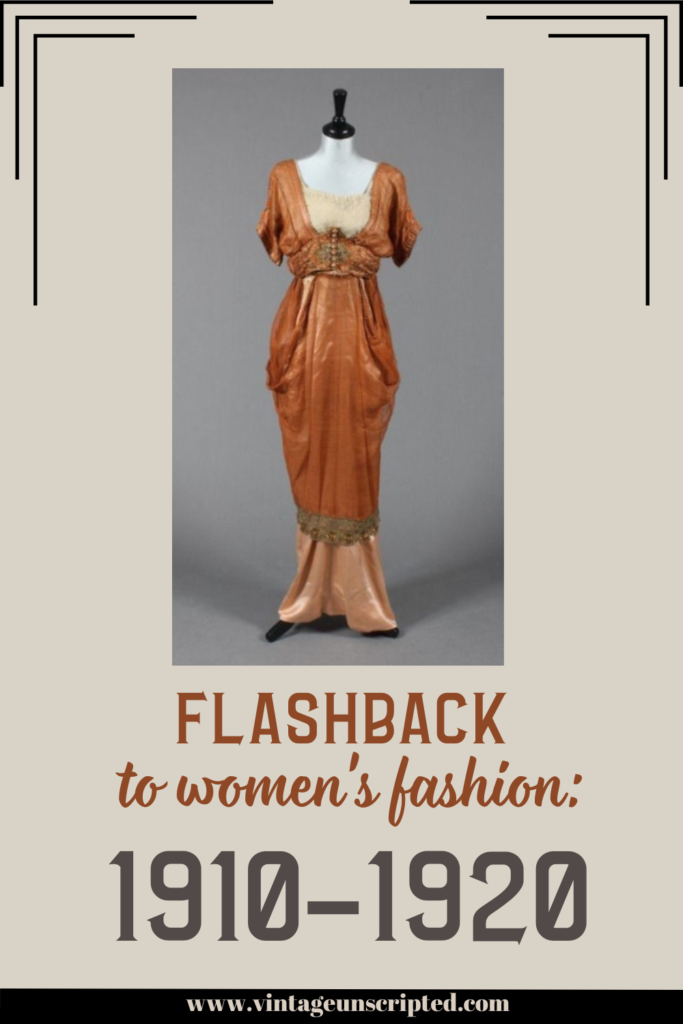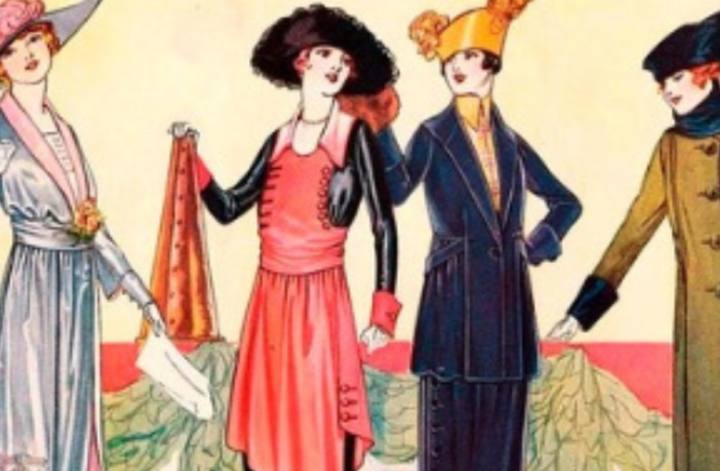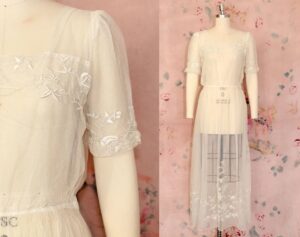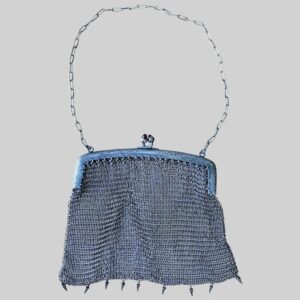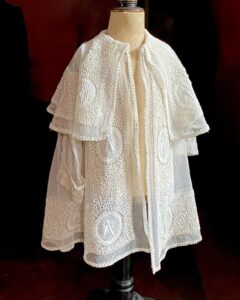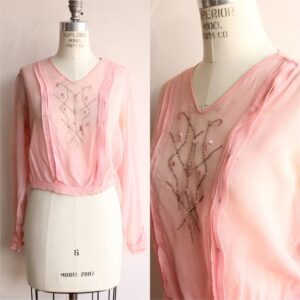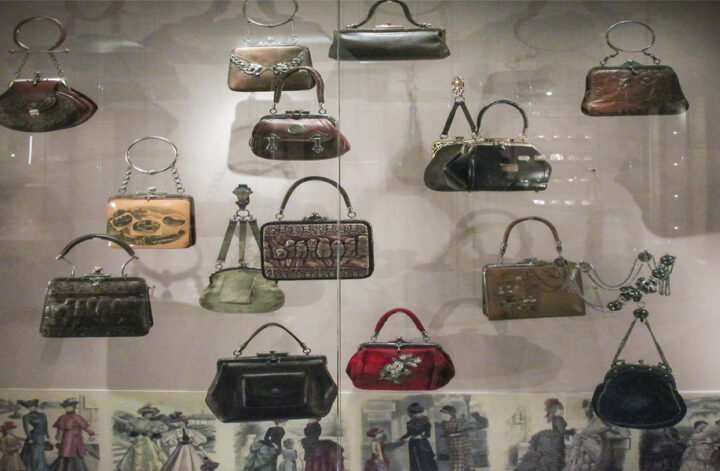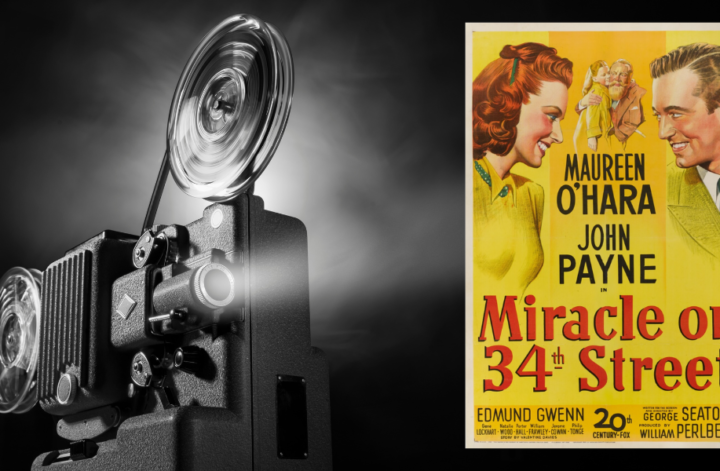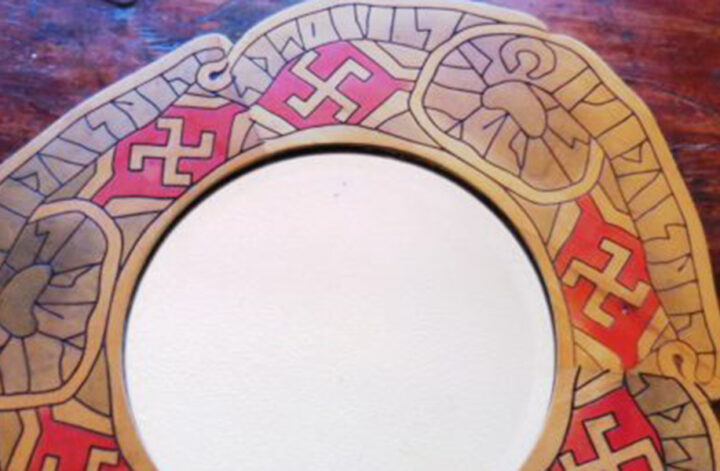A Decade by Decade view of Women’s Fashion in the 20th Century. This 10-part series covers the styles and changes in women’s fashion from 1900 to the year 2000. We discuss everything from designers to fabrics, hem lengths to sleeves. This week we look at vintage fashion from 1910 to 1920. Follow along with us each week as we delve into another decade.
Between 1910 and 1920 fashion began to change more quickly and dramatically. By 1910 corsets were on the way out and a more fluid look was taking hold. Hair and hemlines were getting shorter. Dresses no longer swept the floor but were now just above the ankle. Shorter hair allowed for larger hats to be anchored as statement pieces.
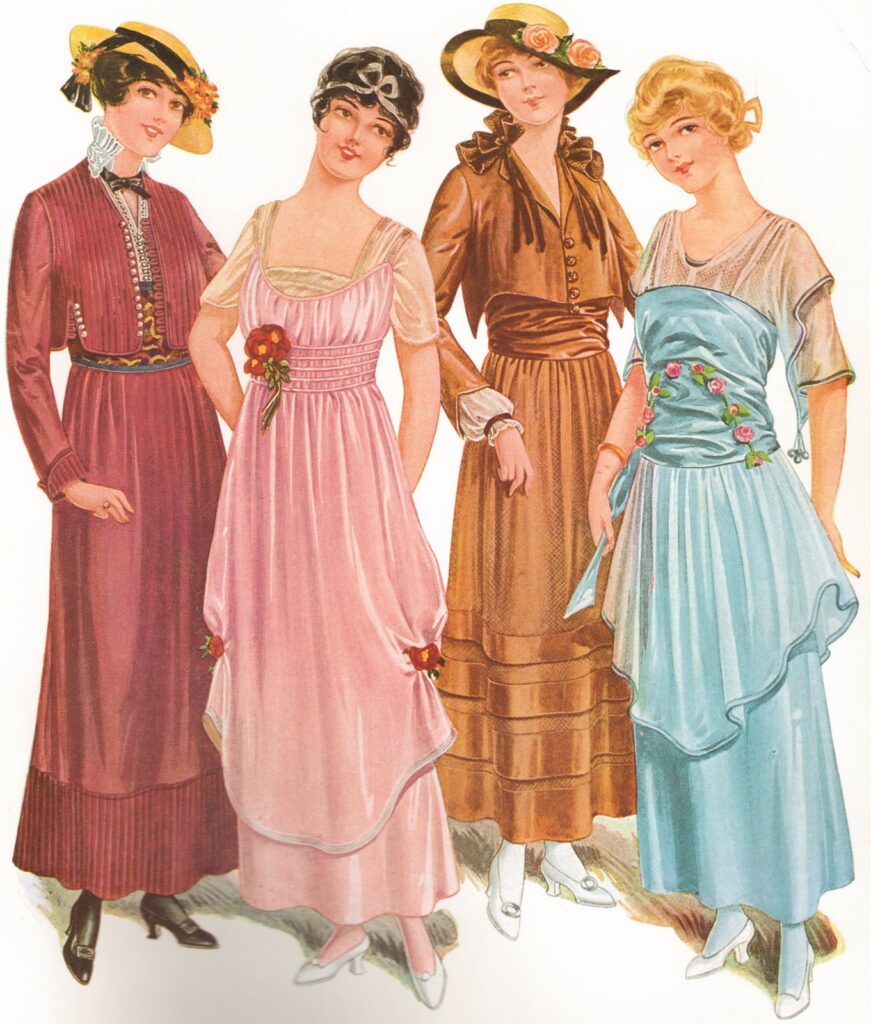
Necklines lowered as well and V-necks were popular. The constrained “pigeon” look of the previous century was gone. In its place was a new freedom in fashion. Skirts were wide at the hip and narrower toward the ankle giving rise to the aptly named hobble skirt.
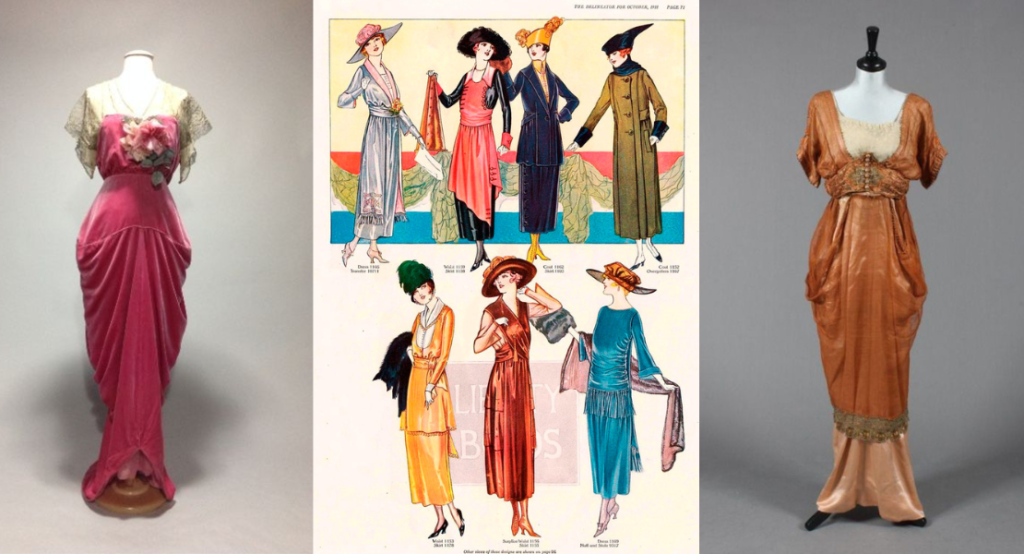
The slinky unstructured look of the 1920s was beginning to take hold. Gone were the heavy skirts and many layers of fabric making it difficult to move around. Women were rebelling against the confined fashions of the past and opting for more fluid and comfortable wear.
Paul Poiret was still the king of fashion during this era. It was his designs that brought the look of the Orient to Paris fashions and beyond. This new look was completed with long tunics worn over slim skirts with detailing reminiscent of Scheherazade which had been performed in Paris in 1910 by the Ballets Russes.
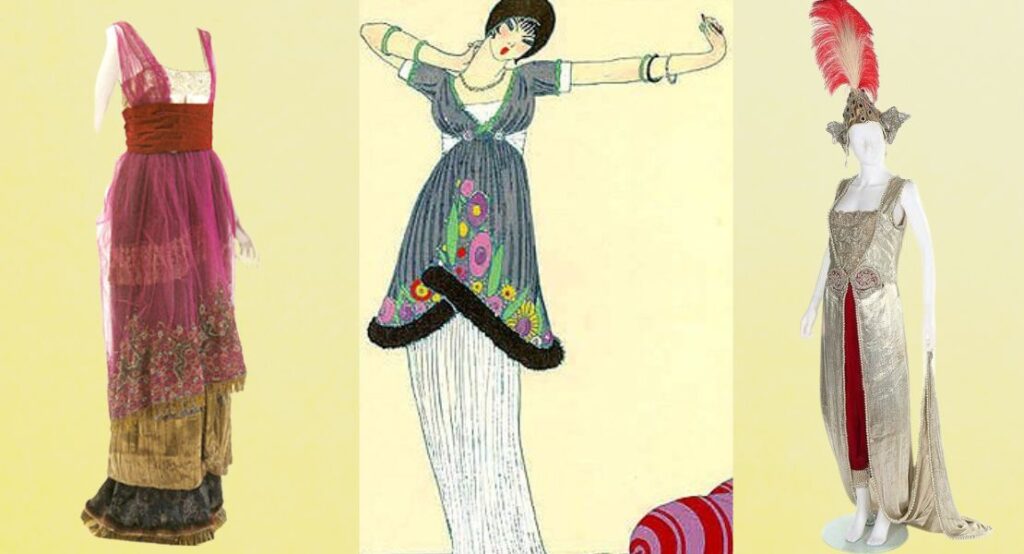
One aspect of the fashion world that had an outsized effect on clothing styles at the time was the adoption of ready-to-wear clothing. While mass-produced clothing in the U.S. began with the production of uniforms for the War of 1812, the idea did not catch on with women’s wear until the late 19th century. Women’s clothing was much more ornate and structured than men’s clothing and therefore more difficult to produce en masse. As women’s clothing became less structured, mass production began to take off.
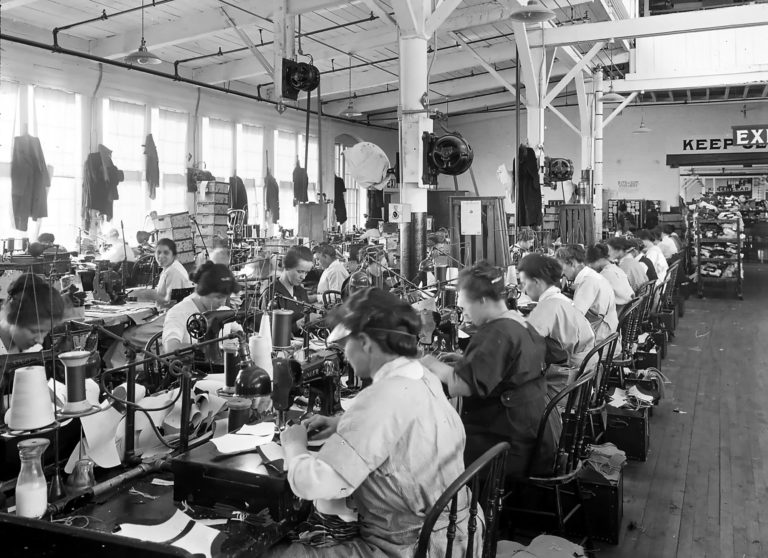
A second component of the time that changed women’s fashion of the day was the rise of American fashion magazines. Women’s Wear Daily, Harper’s Bazaar, and Ladies Home Journal all brought designers to the attention of women. Fashion was no longer the domain of Paris.
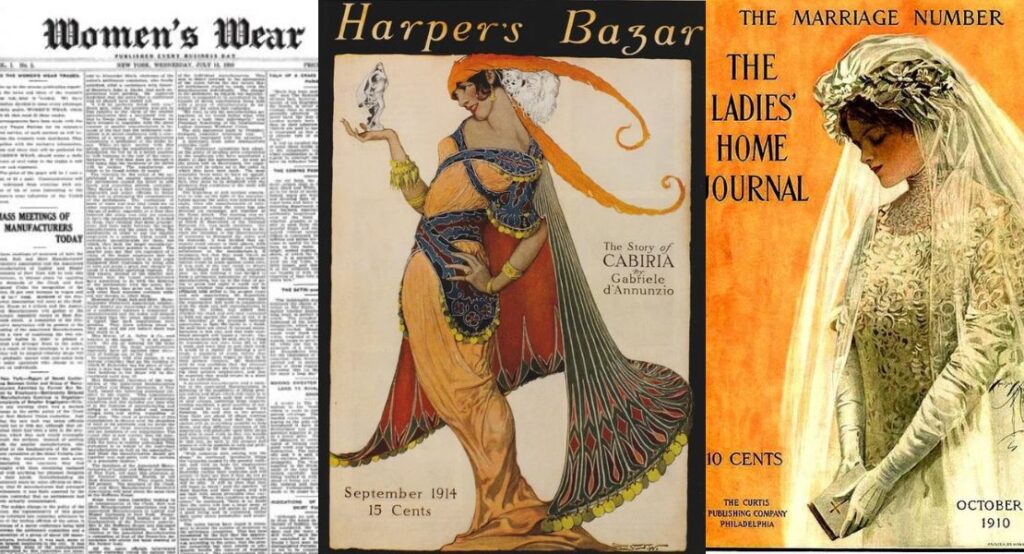
With the world of fashion expanding beyond Paris a British designer named Lucy, Lady Duff Gordon became popular with a salon in London. With American interest in fashion on the rise, she expanded her business into New York in 1910. Her salons further expanded into Paris and Chicago a few years later. She was also one of the survivors of the Titanic.
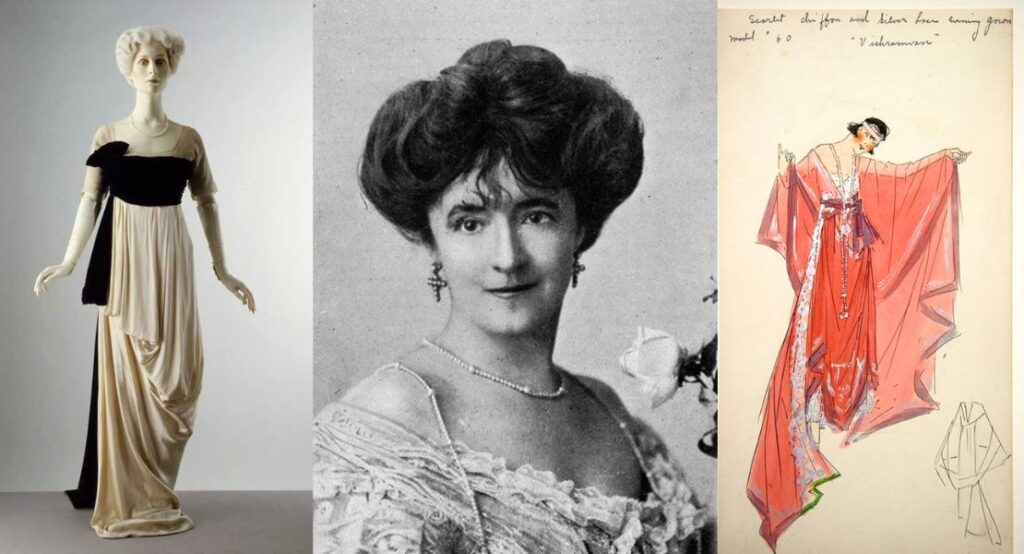
The war also had a profound influence on fashion. Poiret’s orientalist looks dominated fashion in the early part of the decade. But once the war began, women’s fashion became simpler, less fussy, and more utilitarian. Women had become part of the war effort and needed practical clothing as they went to work in support of the war. Even children’s clothing of the time was beginning to develop into more comfortable wear. Knits were being worn and kids looked less and less like miniature adults. Fashion took on a whole new look as the war ended.
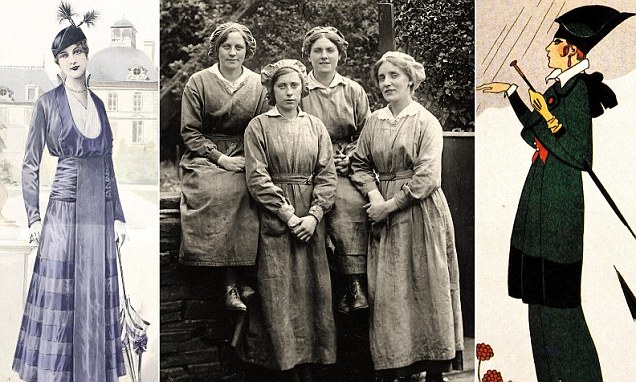
Wear The Look of the 1910s:
Explore the other decades by clicking here.
Pin It:
